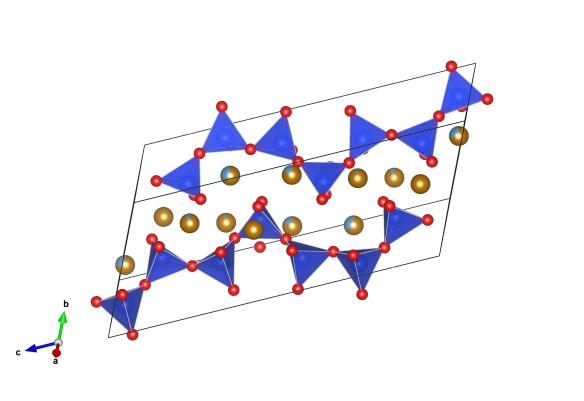A mineral that came down to Earth – pyroxferroite
What does it look like?

The crystal structure of pyroxferroite. The blue tetrahedra are the silicate units which form chains along the structure.
What is it?
So today is Buzz Aldrin's birthday – Happy Birthday Buzz! Inspired by his and other exploits on the Moon we're featuring a mineral that at one point was only thought to occur on our lunar neighbour.
The Apollo lunar landing missions, six in all, brought back nearly 400 kg of rock which was laboriously studied on its return to Earth. In these samples three new minerals were identified – armalcolite, pyroxferroite and tranquillityite. At the time each was thought to be unique to the Moon, but over the years all have been identified in Earth (and Martian) rocks. The last of these moon minerals to be found terrestrially was tranquillityite, which was discovered in a rock from Western Australia in 2012.
Pyroxferroite is classified as an inosilicate mineral, meaning that it has a chain (or backbone) of silicate tetrahedra running through it that are all connected. In between the chain can be found iron and calcium atoms. Since its discovery in the Apollo rock collection it has been found in rocks from all over: Japan, Sweden, USA and even a rock from Mars.
Where did the structure come from?
The structure of pyroxferoite was found by Burnham in 1971, and is #9012889 in the Crystallography Open Database.






